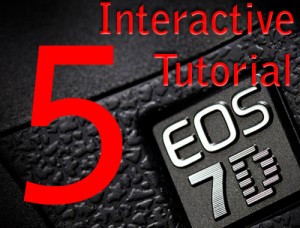Tag: tutorial
Electronic Lenses for your GH1 / GH2 or AF100
One of the most often asked questions is about the types of electronic lenses that work best with the m4/3 sensor. People are typically are worried about the crop and getting wide-angle lenses. Adapting non-electronic lenses to the GH1 or GH2 is simple, since these cameras have a very shallow flange depth and no mirror, there are adapters to almost every lens in existence.
Crop – In terms of sensor size, the GH1 and GH2 in 16×9 video mode is equivalent to a 1.85x crop compared to a similar lens mounted on a 5D. A Canon 7D/60D/T3i are all a little over 1.6x crop. This crop factor only makes sense if you either come from a 35mm still photography background, as the sensor in the GH1/2 is close to a 35mm cinema camera frame size. Nonetheless, it does help factor in the difference in FOV when using the lenses on each camera.
Low Budget
1. 14-42 MegaOIS 3.5-5.6 – Daylight walkaround lens $199

For people new to DSLRs, or not converting their old lenses to m4/3, this may be one of your first lenses. The 14-42 is cheap, has excellent stabilization, and will work fine in most daylight situations. If you need a zoom that covers the typical kit range at the typical kit-lens speed, this is your choice.
2. Convert your old FD/Nikon lenses – Adapters range from $25-$300 on amazon and eBay but be cautious as some of the cheaper adapters have fitment issues with lenses being too lose or so tight you can’t even remove the lens!
3. Panasonic 20mm f1.7 prime – $399

This lens is optically fantastic from 1.7 to f16. For those that like to keep an electronically controlled prime on their cameras, you really can’t do any better than this little lens. One minor drawback for serious film work is the electronic focus. Other than that, this is a fantastic lens.
Mid Budget
1. Panasonic 14-140 Mega OIS f4-f5.8 $849

If you are looking for the overall best midrange superzoom for your AF100, GH1 or GH2, this is your best option. The Mega OIS implementation is one of the best video IS modes I’ve ever seen in a still lens. For others looking for instant quiet video-style autofocus, this lens is your only option. It is not the fastest lens in the world, but for its range and speed it is a truly excellent lens that should be in all m4/3 owners camera bags
2. Olympus 14-54 f/2.8-3.5 $599 – m4/3 adapter $169

A step above the 14-42, this is a regular 4/3 lens which means in order to adapt to a m4/3 mount camera you need an adapter like the Panasonic DMW-MA1 which usually sells for around $169. The nicest feature of this lens is that it is the closest to a constant prime you will find in these focal lengths. The only feature its missing is image stabilization.
3. Leica 14-50 f2.8-3.5 $899 – m4/3 adapter $169

A fantastic zoom lens …
Canon 7D, 60D and t2i Video Zoom recommendation list

Going back to October 2009, I released a recommended zoom list for the Canon 7D. Here is the 2010 Update for all of the Canon crop cameras
Wide:
Tokina 11-16 f/2.8 AT-X 116 Pro DX

Why: Still the best wide-angle constant aperture zoom lens
Why not: Hard to find in EOS Mount
Normal:
Tamron 17-50 VC f/2.8 XR Di-II VC LD Aspherical (IF)

Why: Great Price with rebate right now, not limited by EF-S mount for future camera use (reason why Canon 17-55 is not recommended, though it is a better lens)
Why not: Varying build quality from lens to lens
Alternate: Purchase without VC to save a few dollars
Telephoto:
Budget
Sigma 50-150mm f/2.8 II EX DC HSM Lens

Why: Lens is just as sharp as 70-200 for video, great price for a 2.8 constant aperture telephoto zoom lens
Why not: No Image stabilization
Better
Canon EF 70-200mm f/2.8L IS USM

Why: Classic lens that has been superseded by the newest version of the 70-200. IS works very well. EOS mount means that you wont be limited by camera body choice in the future
Why not: Expensive for just video purposes
Maybe we will have a few more choices next year, but for this year, the picks remain the same. When the next next 5D has a crop mode, you will be thanking me that you didn’t purchase any Canon native EF-S lenses, as the lenses above will all work perfectly on a cropped full frame sensor.


